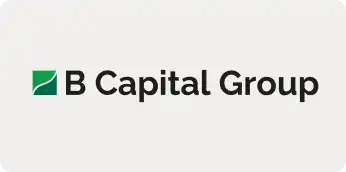You are just out of your board meeting and ready to chase an ambitious ARR goal for the new year. You plan growth targets for your GTM teams top-down, which get translated into quotas (revenue targets) for sales reps. You hire the planned number of reps and look set.
The year starts. Halfway in, things don’t look as rosy. You are not on track to your ARR goal. Even worse, the sales teams are super demotivated because they are way-off their quotas. They do not feel like pushing any further for the year. Ring a bell?
Almost all founders and GTM leaders of fast-growing startups undergo this situation during the journey. The revenue growth goals always seem on shaky grounds. Also, there is this constant doubt on whether the quotas set for sales teams are ambitious, yet attainable.
Here are some learnings on sales quota setting back from my days managing Revenue Operations at Freshworks.
Caveat – The learnings are more suited to when you are $1M+ ARR and there is some product-market fit. Until then, quoting @Girish on something he said in a different context ‘Focus on income first, you can worry about income tax later’ 🙂
GTM Funnel – The Holy Grail
- Lead source: inbound (SEO + SEM driven signups) vs outbound (SDR + Sales driven lead gen). Split partnerships-generated leads as well if that’s sizable
- Deal Type: revenue from new logos vs expansion revenue from existing customers
If there is meaningful data, you can segregate further by
- Geography (if you operate in multiple different geographies)
- Customer segments (employee segments or other segments relevant to your business)
- Product types (if you have more than one),
The key here is meaningful data. Early in the startup journey, you may not have enough data points, so don’t feel pressured to dissect data by each of these segments. You can always torture your data to tell you something, but that will almost always lead you in the wrong direction.
Now that you have pulled the data by segment, the next goal is to arrive at a benchmark for each of these funnel metrics
- No. of Marketing Qualified Leads (MQLs)
- Conversion rate from MQLs to Sales Qualified Leads (SQLs)
- Conversion rate from SQLs to wins
- Average ACV for each of your new wins
- Average sales cycle time
- Average net revenue expansion at the end of 12 months of sales
Productive Sales Capacity – The Unknow Devil
Under-estimating sales ramp times and sales rep attrition is one of the most common mistakes that many founders and GTM leaders make. For a company that has a product-market fit, it is almost criminal to miss out on revenue goals because of a shortfall in the productive sales capacity. And yet, several fast-growing startups fall into this trap.
For rep attrition, always gather historic data and categorize it by the tenure of the rep (number of months in the system).
Ramp times are a little more difficult to estimate accurately.
The thumb rule is that your ramp time = sales cycle time + training time period if the sales rep is fed with the required MQLs. If some portion of the MQLs need to be self -generated by the reps, then you need to allocate a larger ramp time proportionately.
Managing Territories
If you have set similar quotas across different reps, then you need to ensure that the territories are split equally. This means that two different territories, in theory, lead to similar results when the GTM funnel metrics are applied. This is of course easier said than done and it’s a topic by itself. If there is one quick takeaway, be prepared to fine-tune territories quickly and periodically as you see new information.
Quota Time Frame
Let us say you did all this and came up with an overall quota or goal of say $360k ARR for your Asia/India rep selling globally. Now, how do you translate this into the frequency of quota? Should you do $30k ARR ($2.5k MRR/month) as quota or do $90k ARR ($7.5k MRR/quarter) as quota or do quota at a full year?
How Do You Cross-verify the Quotas That You Have Set?
If you have reps co-located in the geographies that you are selling to, Quota to On-Target-Earnings (OTE) ratio is an important metric that you should use.Say if you have set $600k ACV as Quota, and the on-target earnings for the rep are $120k (earnings when they hit 100% quota), then the Quota to OTE ratio is 5 ($600k / $120k). If this metric can be pushed to 6 that is great, but below 4, know that you have a problem to solve.
Also, be aware that the Quota/OTE ratio may not give you insights if you have reps in Asia/India selling to other geographies such as US/UK as there are other factors (additional marketing spend, etc.) to account for. In such scenarios, stick to conversion rates across the funnel and see if there are improvement opportunities between different segments.
Another analysis that serves as a good heuristic is a histogram analysis on the quota attainment of your reps. There will be some reps who will be missing their goals. But if around 2/3rd of your reps fall in the 80 – 100% attainment category then consider the quota to be in the right range.
Final Thoughts
There was a time in Freshworks history when we wanted to 3x our ARR in one particular year, after having done that successfully in the previous year. By then, we were already a decent-sized SaaS company and it was an ambitious goal in absolute revenue terms.
We ended up doing 2.3x ARR that year. It was a phenomenal revenue growth considering our size. But our sales organization was absolutely gutted because they all missed their quotas.
That’s certainly not how we wanted our teams to feel at the end of such a fantastic year for the company. We did the right thing and adjusted quotas and payouts at the end of that year. And we learned a lot from that.

























